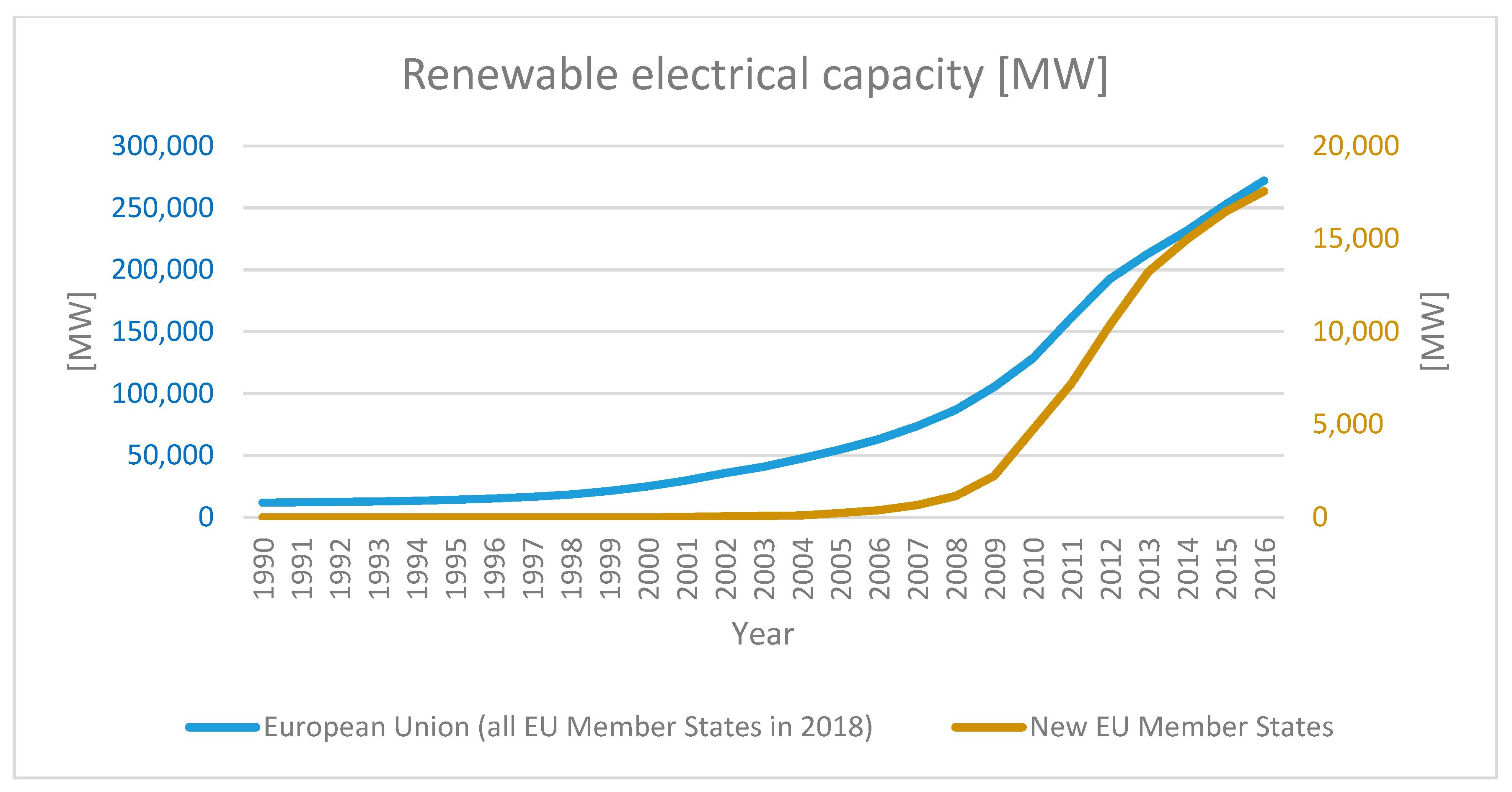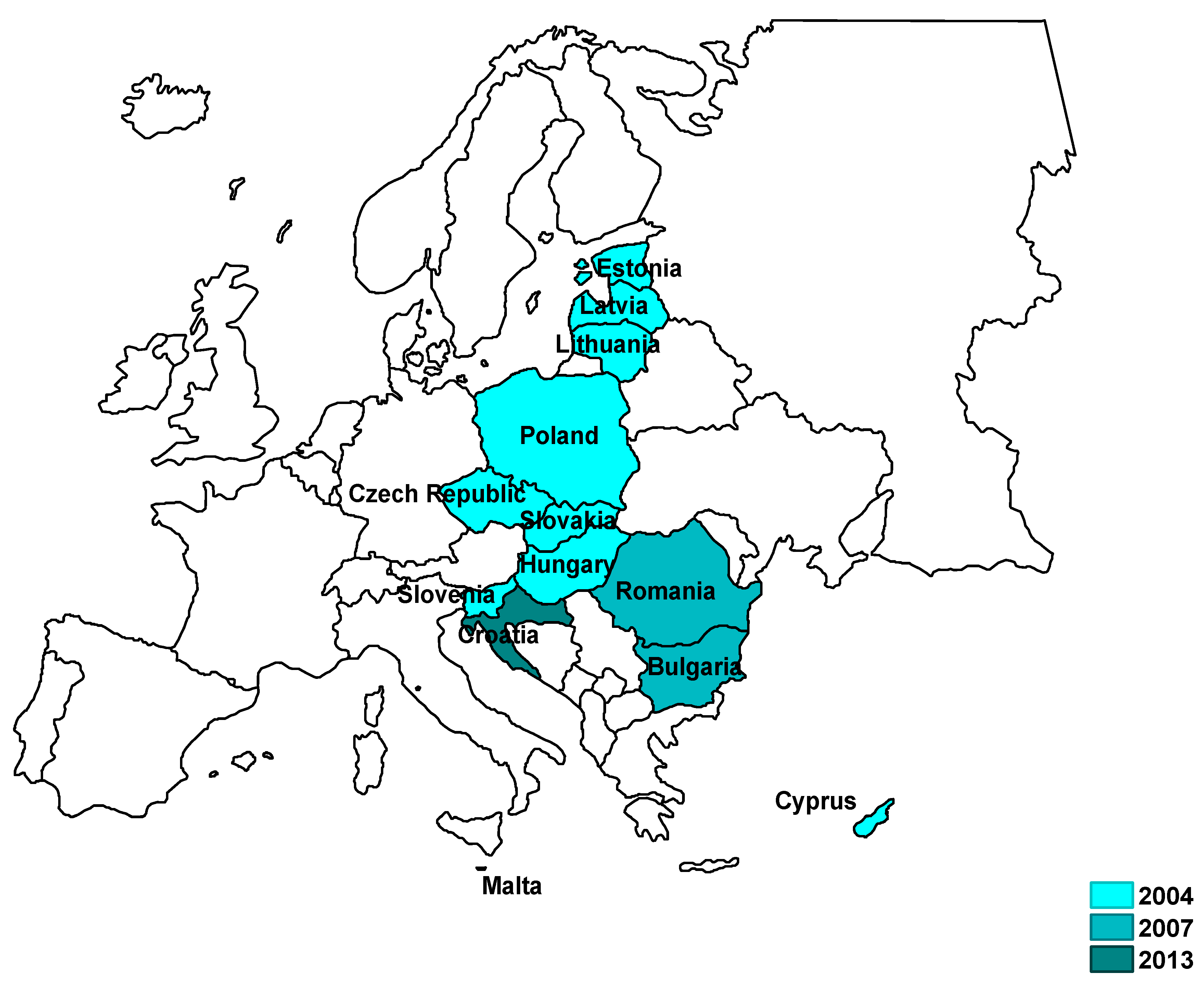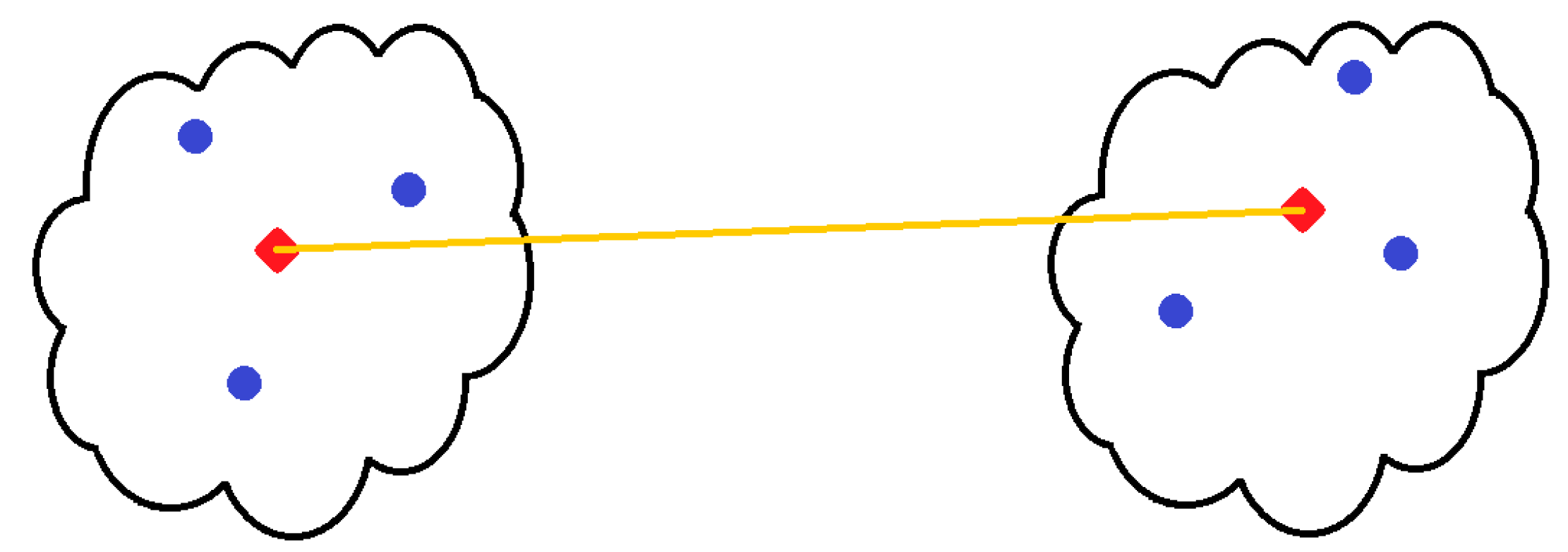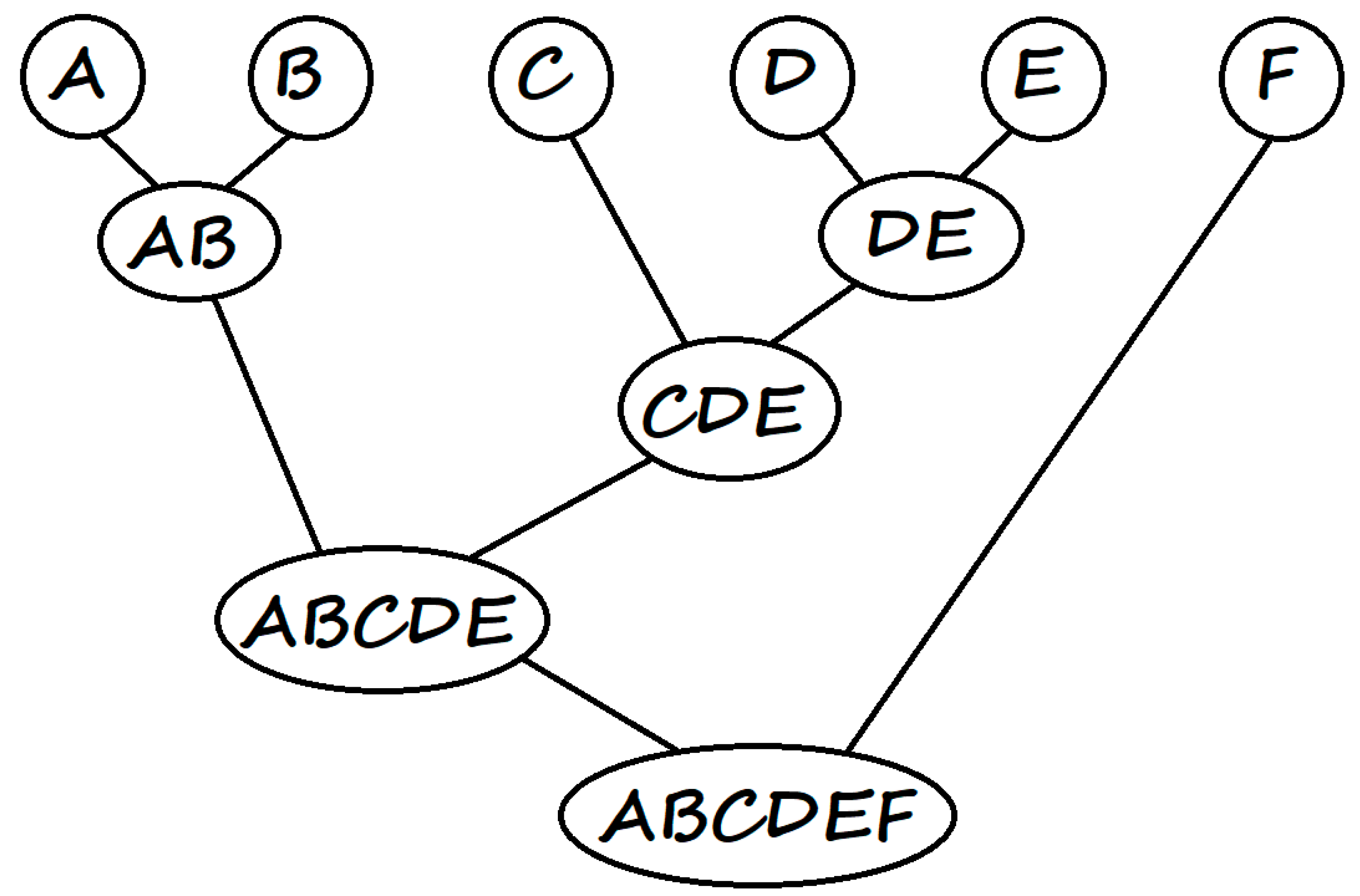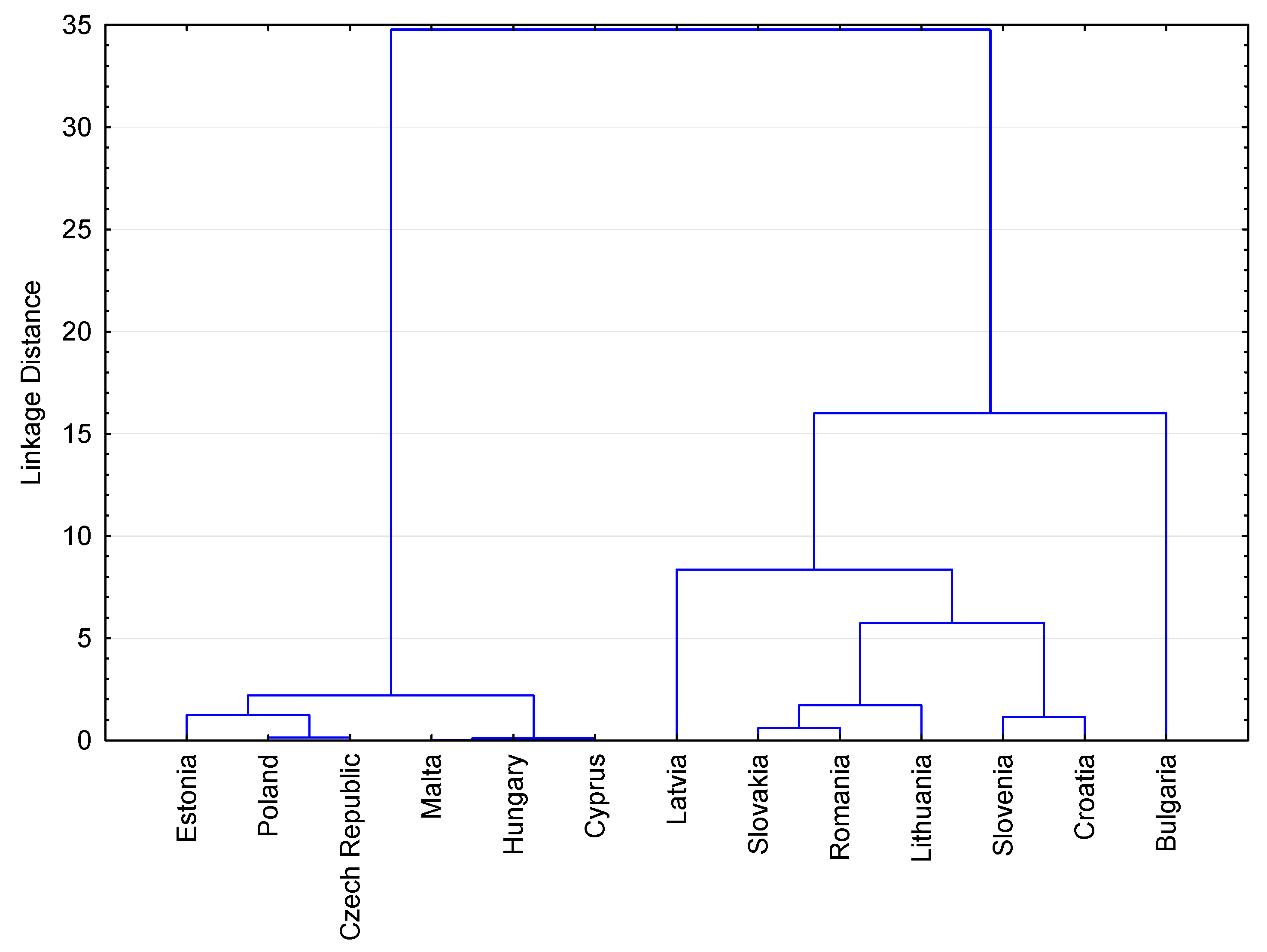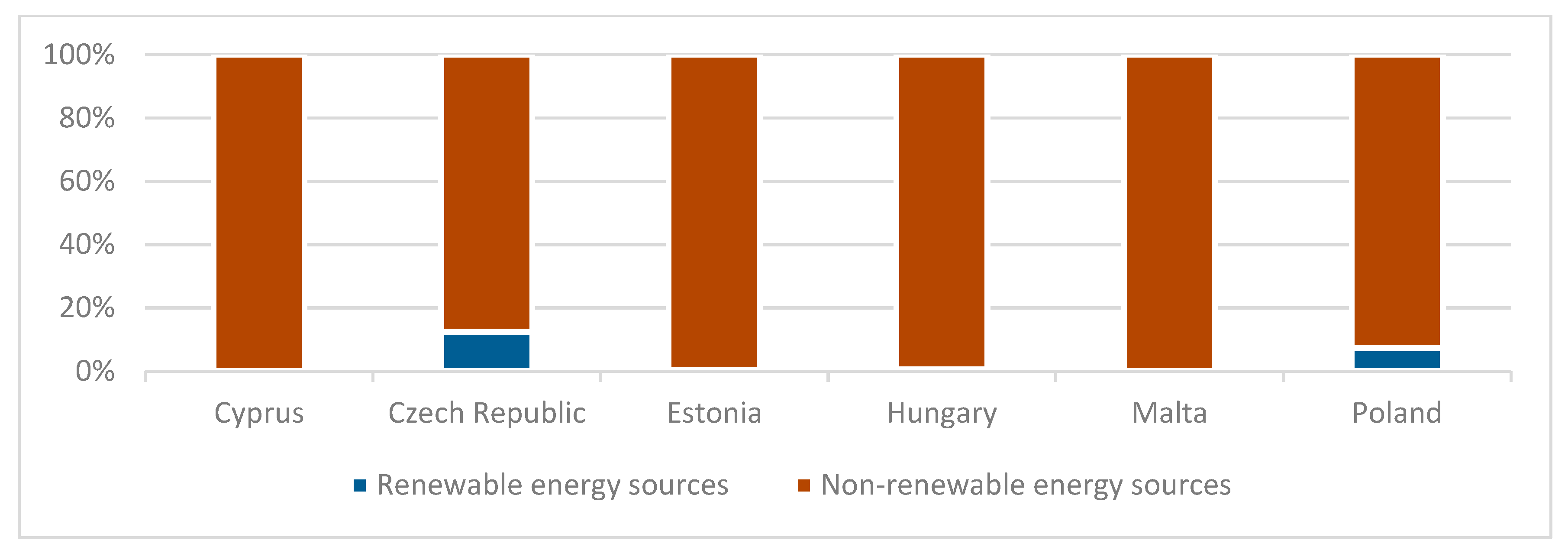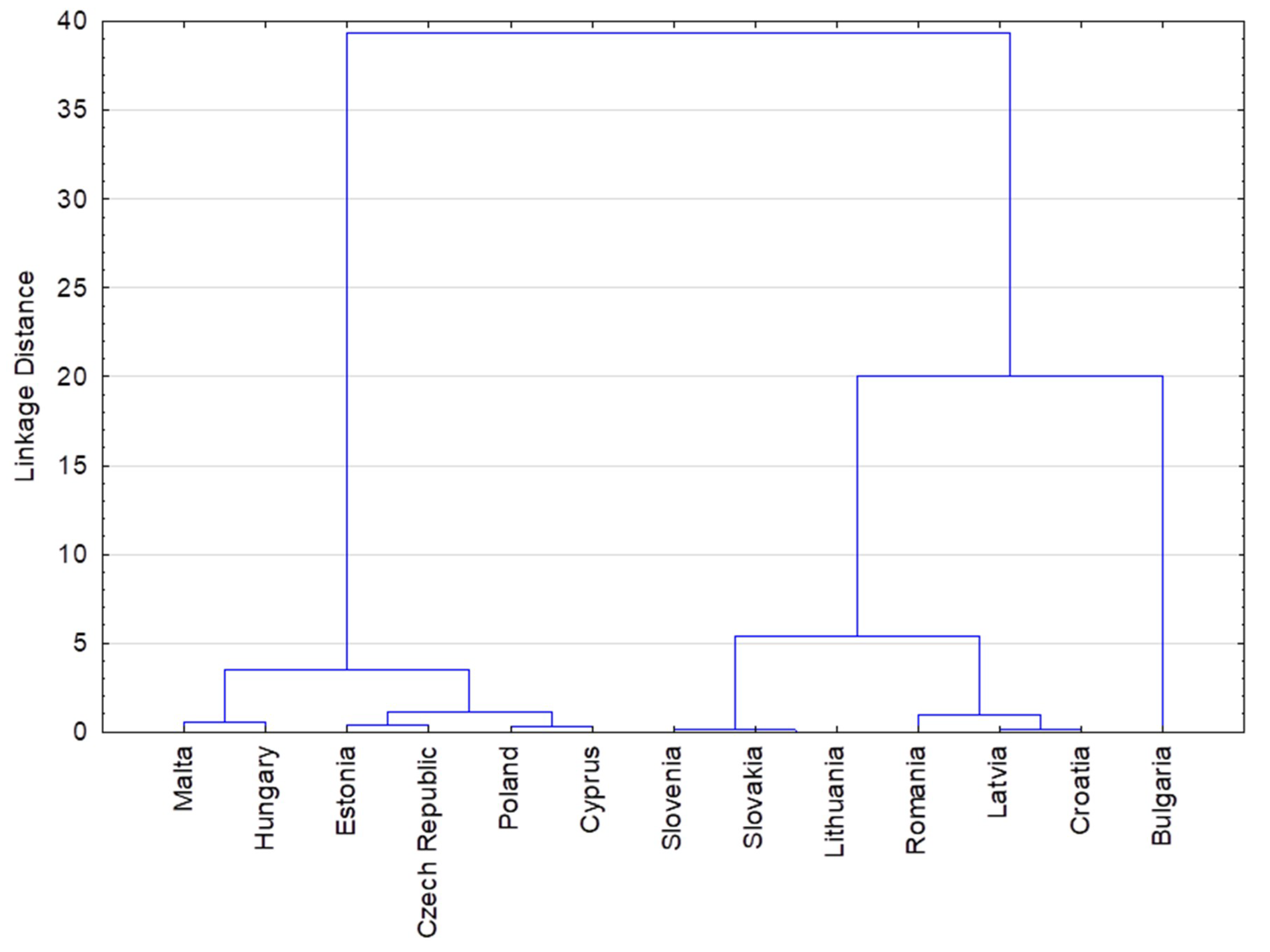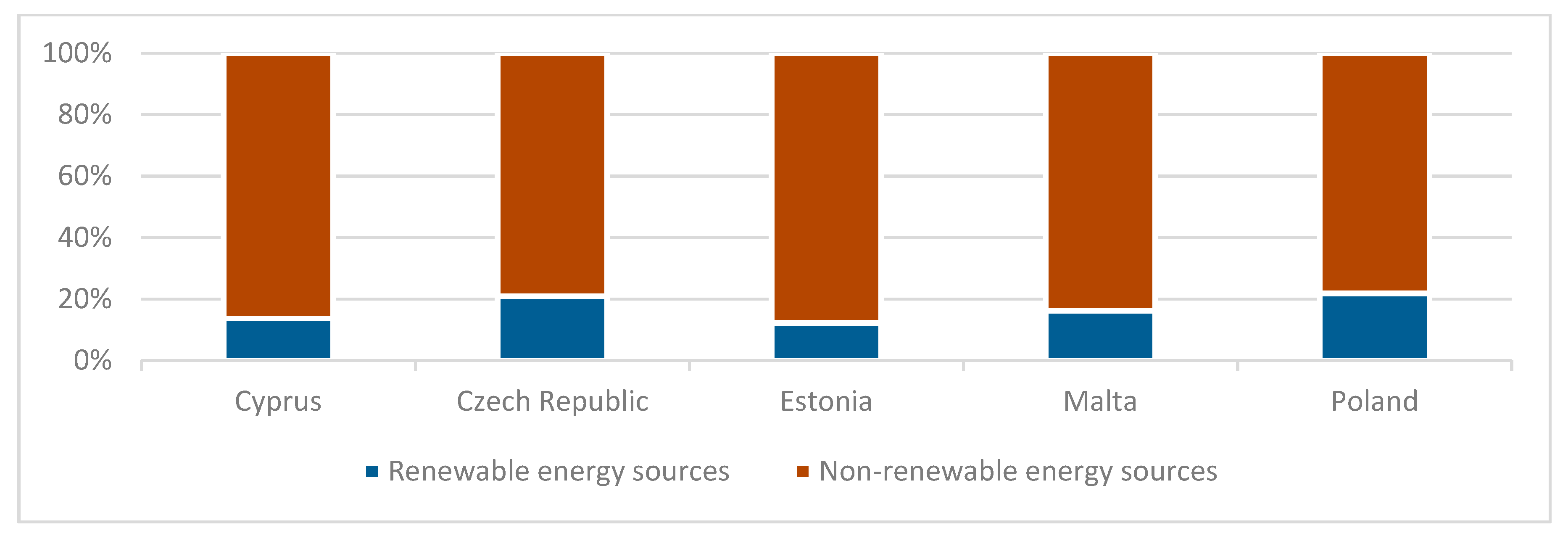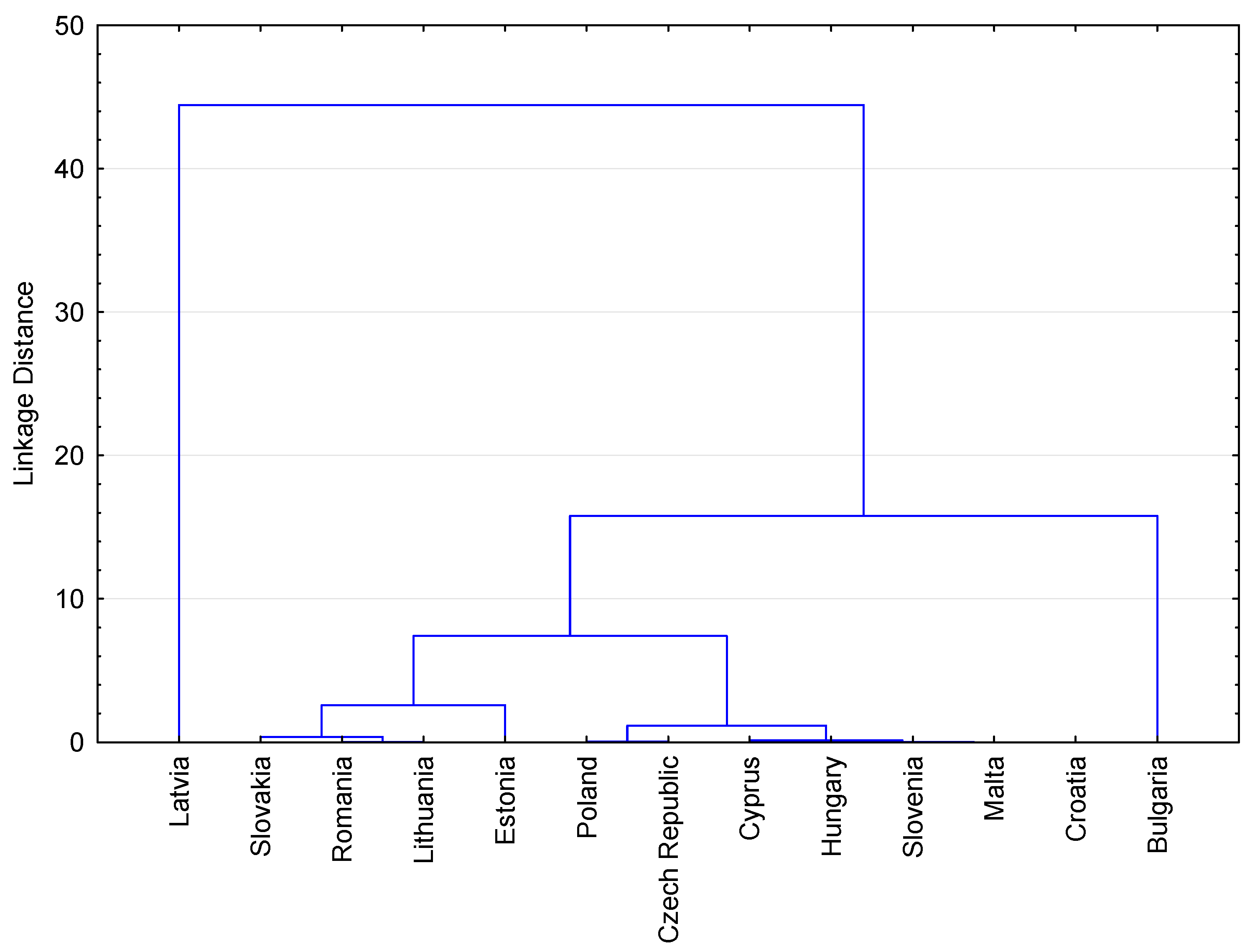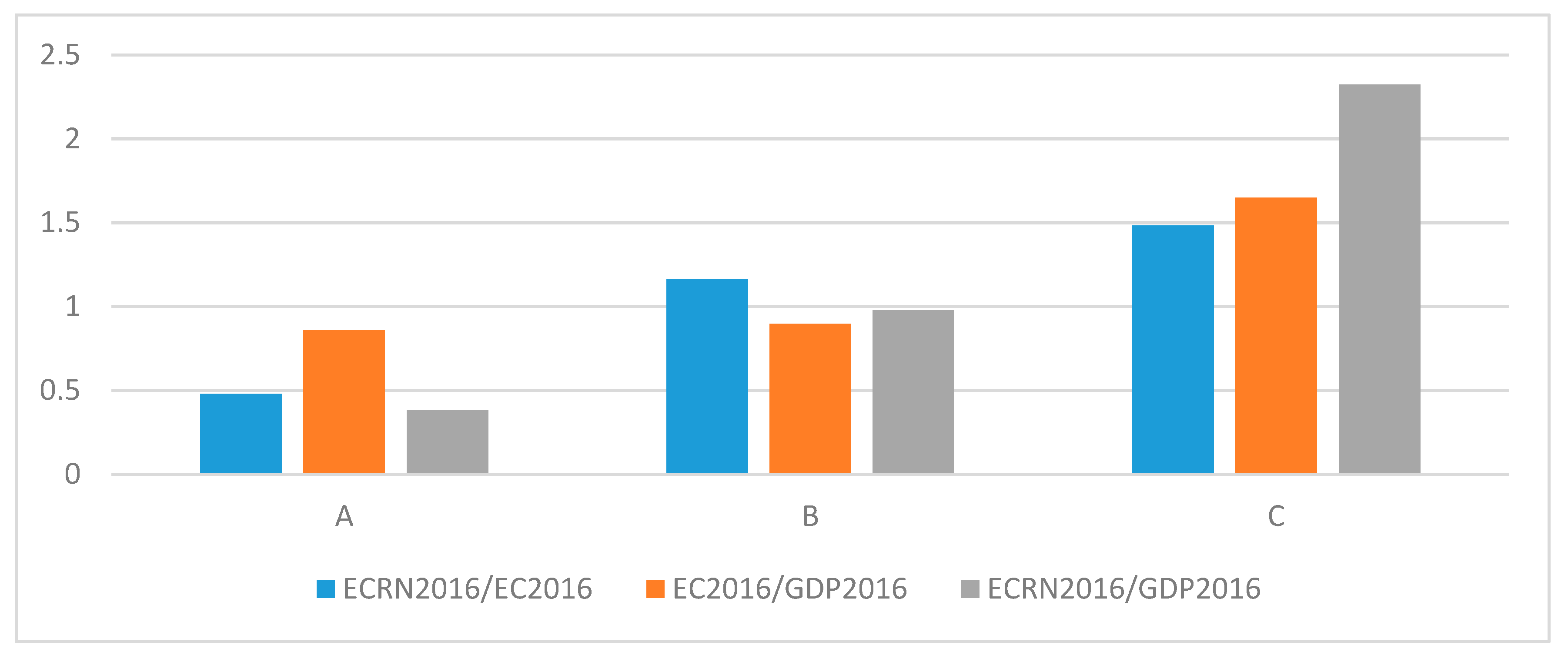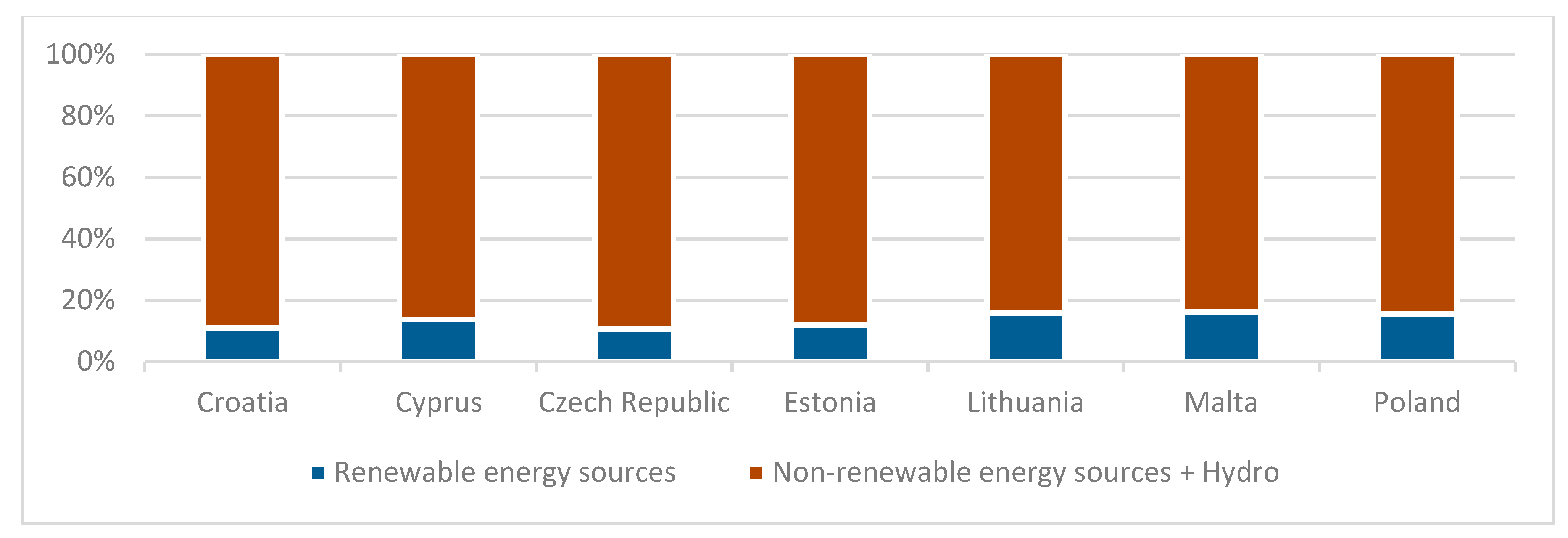1. Introduction
Electricity is the basis for the functioning of the modern world, but its acquisition is often not environmentally friendly. Nearly 200 years have passed since the beginning of the industrial revolution, but many countries still base their energy on fossil fuels [
1,
2,
3]. Along with an increase in ecological awareness, many countries are aiming to reduce human interference in the natural environment and obtain energy from renewable sources. Wind energy, solar radiation, precipitation, tides, sea waves, and geothermal energy are considered renewable energy sources [
4,
5]. Biofuels, biomass, and biogas are also considered renewable energy sources if their origin is ecological, but their conversion into energy through combustion is not [
6,
7]. Similarly, the qualification of hydroelectric power plants as renewable energy sources is controversial. Large hydroelectric plants have a negative impact on the environment [
8,
9,
10,
11,
12,
13,
14,
15,
16], and for this reason, as in case of biofuels, they are often not included in studies on renewable energy sources [
17,
18,
19,
20,
21,
22].
Many factors impact the introduction of pro-ecological solutions into the energy policy of states. Apart from the most obvious, such as the level of economic development and the volume of energy production, there are also important geographical determinants [
23,
24] or social acceptance factors of renewable energy prices must be considered [
25,
26,
27]. In the literature, these factors are often analyzed in pairs or groups, e.g., gross domestic product (GDP) and CO
2 emissions [
28,
29,
30,
31,
32,
33].
Regardless of the region of the world, the majority of energy demand forecasts show that demand will grow in the within several years or even a few decades [
3,
34,
35,
36,
37,
38,
39,
40,
41,
42]. Various studies show a relationship between economic development and energy demand. Most of the papers indicate that economic growth determines energy demand, which is referred to as the “conservation hypothesis” [
43,
44,
45,
46,
47,
48,
49]. The “growth hypothesis” states that economic growth depends on energy production, but, as research shows, economic growth happens when a government policy leads to an excessive reduction of energy consumption [
38,
50,
51,
52,
53]. Regardless of which of the listed factors is a determinant, individual countries need to implement a sustainable growth policy that maintains a balance between the development of countries and regions and the demand for energy [
24,
54,
55,
56,
57,
58,
59,
60]. International commitments and growing environmental awareness result in the same countries often deciding to subsidize investments in renewable energy sources to ensure uninterrupted energy supply to customers, and to simultaneously to provide green energy [
2,
61,
62,
63,
64,
65]. Notably, subsidies do not include hydroelectric power plants because they cannot always be considered environmentally friendly and, due to the need to diversify energy sources, do not fit into sustainable development policy [
10,
17,
18,
66].
In Europe, the need to reduce energy consumption and care for the environment started being widely discussed in the late 1960s [
67,
68,
69]. The oil crises of 1973–1974 and 1979–1982 contributed to discussions on the common energy market, which was reflected in the Treaty of Lisbon in 1992. The four main assumptions of the common energy policy were contained in Article 194 of the Treaty on the Functioning of the European Union (TFEU) and they concerned: guaranteeing the functioning of the energy market; guaranteeing energy supplies to European Union (EU) countries; promoting energy efficiency and development of new, renewable energy sources of energy; and promoting inter-state energy connections.
In subsequent years, further documents and directives were published, e.g., Green Paper, White Paper, and Directives 96/92/EC and 98/30/EC, aimed at regulating the common energy market in the EU, considering the specific energy markets of individual Member States. The low effectiveness in the implementation of new laws in the Member States and the largest enlargement of the EU in history in 2004 created a need to develop a new law that would effectively regulate the common energy market. The Directive of 2009 imposed an obligation on Member States to reduce greenhouse gas emissions considering the structure of energy systems of individual countries and the level of their economic development.
The presented legal regulations are reflected in data on renewable energy sources in EU. The data show that at the beginning of the 21st century, the energy infrastructure was modernized to a greater extent so that it would be less harmful to the environment [
1]. This is visible for the entire EU and even more so among its new Member States, as shown in
Figure 1. This chart includes the aggregated capacity of renewable energy sources from wind and solar power plants.
As mentioned above, the EU, while regulating the common energy market, pays special attention to caring for the natural environment, but simultaneously understands that the energy markets and economies of individual countries differ. It is important to consider these differences in requirements for individual countries as, for example, in Central and Eastern European countries, (CEECs) rapid growth of energy production from renewable sources to the level in richer countries of Western Europe cannot be expected. Germany, for example, produces 42% of electricity from renewable sources [
25]. Not only is the level of wealth of a given country significant, as measured by GDP, but also the initial structure of renewable energy shares in all types of energy sources. The ratio of energy to gross domestic product (E/GDP), i.e., energy intensity, is also important [
35,
54,
71,
72,
73,
74,
75,
76]. This factor describes the energy efficiency of the state’s economy and indicates the cost of converting energy to GDP. The values of these factors differ significantly between the countries of Western Europe and Central and Eastern Europe and change dynamically over time. The best example for comparison is Germany and Romania. In 1992, energy intensity in Romania was four times higher than in Germany, and in 2013, it was only twice as much [
35]. Countries that joined the EU in 2004 and subsequent years [
77,
78] are significantly different from the older Member States of the EU. Differences are related to many aspects, among which the most important from the point of view of this paper are the level of economic development and the structure of energy sources. The GDP of new Member States of the EU was much lower than that of the Member States of the EU from Western Europe [
79,
80], and with few exceptions, combustible fuels were the main sources of energy for new EU Member States [
81,
82,
83]. For this reason, we focused on analyzing renewable energy sources against the background of economic growth only among new Member States of the EU. The sources of renewable energy were analyzed using two variants. In the first, all officially recognized renewable energy sources were considered as renewable energy sources. In the second variant, to remove the impact of the hydroelectric power stations built several dozens of years ago, only wind and solar power plants were accepted as renewable sources. Both options for the classification of renewable energy sources were analyzed for 2004 and 2016 to determine the level of change. The tests were performed with an application of cluster analysis [
84,
85,
86,
87], enabling us to create groups of countries similar to each other in terms of renewable energy sources and GDP in 2004 and 2016.
In the literature, many publications have separately analyzed renewable energy sources as a whole or individually. A novelty in our article is a comparative analysis that considered the different classifications of renewable energy sources. As such, we were able to determine the differences in the energy assessment of individual countries, depending on the classification of renewable energy sources. Separation of modern energy sources from all energy sources in comparison with the GDP also enabled an assessment of the energy efficiency from these renewable energy sources.
4. Discussion
In the context of the global development of renewable energy sources, we attempted to classify new EU Member States in terms of their progress in this area, and presented energy costs against their GDP. The electrical capacity selected for the analysis was divided into renewable and non-renewable energy sources as well as GDP. In order to compare the progress in the implementation of EU directives related to the reduction of greenhouse gas emissions through a change in the structure of energy sources, two variants of a cluster analysis were conducted for 2004 and 2016. In the first variant, the analyses were conducted for all known renewable energy sources. These analyses showed that all new EU countries in the analyzed period implemented a policy of increasing the electrical capacities from renewable sources to a similar level, which caused the groups of countries similar to each other in 2004 and 2016 to be identical. The distinctive group was group C, which contained only Bulgaria. Bulgaria is characterized by a large energy intensity, which is the cost of transforming energy into GDP. However, the significant reduction in energy intensity over the considered period can be regarded as a country success. In order to omit the influence of large hydropower plants on the results, analogous cluster analyses of only renewable energy sources of a new type, i.e., wind and solar power plants, were completed. The analysis for 2004 showed that the differences from previous analyses for 2004 were significant. The number of created groups was the same, but their characteristics and composition were different. The only group that remained was C, containing Bulgaria, again due to its high energy intensity. Group A only contained Latvia, which at the time was characterized by the possession of wind energy sources. The remaining 11 countries were so similar to each other that all were categorized into group B. This group was characterized in 2004 by zero electrical capacity from wind and solar power plants. Another analysis for 2016 showed which groups of countries increased their electrical capacity from modern renewable energy sources to the greatest extent. In this respect, the largest changes occurred in Group C, which included Bulgaria and Romania. In the two poorest countries of the EU, where the energy cost in relation to GDP was the highest, the electricity from hydropower and solar plants was already nearly 20% of the total electrical capacity. Group B, consisting of seven countries, where this type of energy constitute for over a dozen percent of electricity, can also be positively assessed. The smallest increase in electrical capacity from hydro and solar power plants occurred in group A, which included Hungary, Latvia, Slovakia, and Slovenia. It is particularly worth paying attention to Latvia, which was already distinguished in 2004 by having wind energy sources, and yet within 13 years it achieved the smallest increase (2%) in electrical capacity from wind and solar plants among all the surveyed countries. The division of analyses into the two options discussed above, apart from selecting groups of countries similar to each other in terms of electrical capacity and GDP, also showed the importance of the differences in the energy assessment of individual countries in the context of sustainable development, depending on whether their environmental achievements included current, often dozens-of-years-old and large hydropower plants, or whether only modern sources of energy from water and sun were analyzed.
By making analogous analyses, as in this article, the research can be extended to the entire EU. This would allow assessing whether a similar increase in investments in new types of renewable energy sources occurred countries that were members of the EU before 2004, as in the countries that joined in 2004 and later. Conducting analyses for all EU Member States would allow us to determine the differences between old and new members. Further questions could be posed about the composition of the groups in 2004 and 2016: Is there a division between old and new Member States in 2004? Are there any noticeable changes in the groups in 2016 among only old EU countries? Are there groups of mixed old and new Member States in the 2016 groups?
Questions of this type could help determine whether, for example, the new Member States are able to match the old EU Member States, or, despite investments in renewable energy sources, the old Member States do it even more efficiently. An analysis for the entire EU would also show differences in energy efficiency between old and new Member States.
Subsequent research could include Eastern European countries that are not members of the EU. Investigating the level of investments in various types of renewable energy sources in these countries, their development in relation to EU countries could be determined. Depending on the results obtained, it would be possible to analyze whether EU membership and legislation stimulates larger investments in renewable energy sources. Would the new Member States have developed these branches of energy if they did not become members of the EU?
In recent years, the high costs of producing energy from renewable sources have been widely discussed. The proposed classification of renewable energy sources could also be used to assess their impact on electricity prices, production costs, inflation, and consumer purchasing power, among others.
